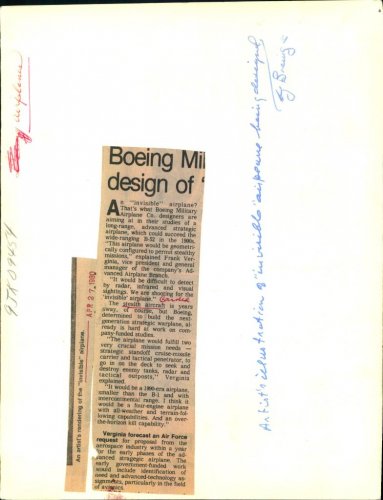New U.S. Strategic Bomber May be Axed if Costs Exceed Limits
March 1, 2012
The U.S. Air Force's planned next-generation strategic bomber might never become a reality if the service is unable to keep costs down,
Wired magazine reported on Wednesday (see
GSN, Feb. 28). The Defense Department has told the Air Force that the price tag of the envisioned nuclear-capable Long Range Strike Aircraft must be kept at $550 million per bomber. Should the unit cost rise above that amount, "we don't get a program," Air Force Chief of Staff Gen. Norton Schwartz told journalists on Wednesday. "Either deliver or, you know, you're outta there, essentially, was [former Defense Secretary] Bob Gates' guidance. I get it. Loud and clear."
The long-range bomber is intended to take the place of the Air Force's aging B-1 and B-2 planes. The Pentagon's fiscal 2013 budget request has allocated funds to advance efforts to design and build between 80 and 100 of the strategic aircraft. The Air Force presently anticipates receiving the new bombers beginning in the mid-2020s (see
GSN, June 1, 2011). The new stealth aircraft is envisioned to have the capacity to carry nuclear weapons, be piloted both remotely or from the cockpit, defeat enemy radar systems, and destroy approaching missiles with lasers, among other capabilities. Historically, the Air Force has had considerable difficulty keeping warcraft development costs down. Gates in 2009 pushed back the effort to develop the next stealth bomber, in part over concerns that the next-generation manned bomber would be too pricey (see
GSN, April 22, 2009). Schwartz did not detail for journalists exactly how the Air Force intended to keep unit costs for the Long Range Strike Aircraft down. He said, though, it was imperative the service acquire the new strategic bomber or face the loss of its ability to mount air attacks at great distances.
"Do you think that the Chinese have established one of the world's best air defense environments, in their eastern provinces, just to invest their national treasure," Schwartz said. "Or for that matter, that the Iranians have established integrated air defenses in their country?" the general said. "I would say that they're not doing this, you know for the fun of it. They're doing this because they have a sense of vulnerability. And I ask you, what is it that conveys this sense of vulnerability to others? One of those is long-range strike. And that is an asset that the United States of America should not concede" (Spencer Ackerman,
Wired, Feb. 29).



